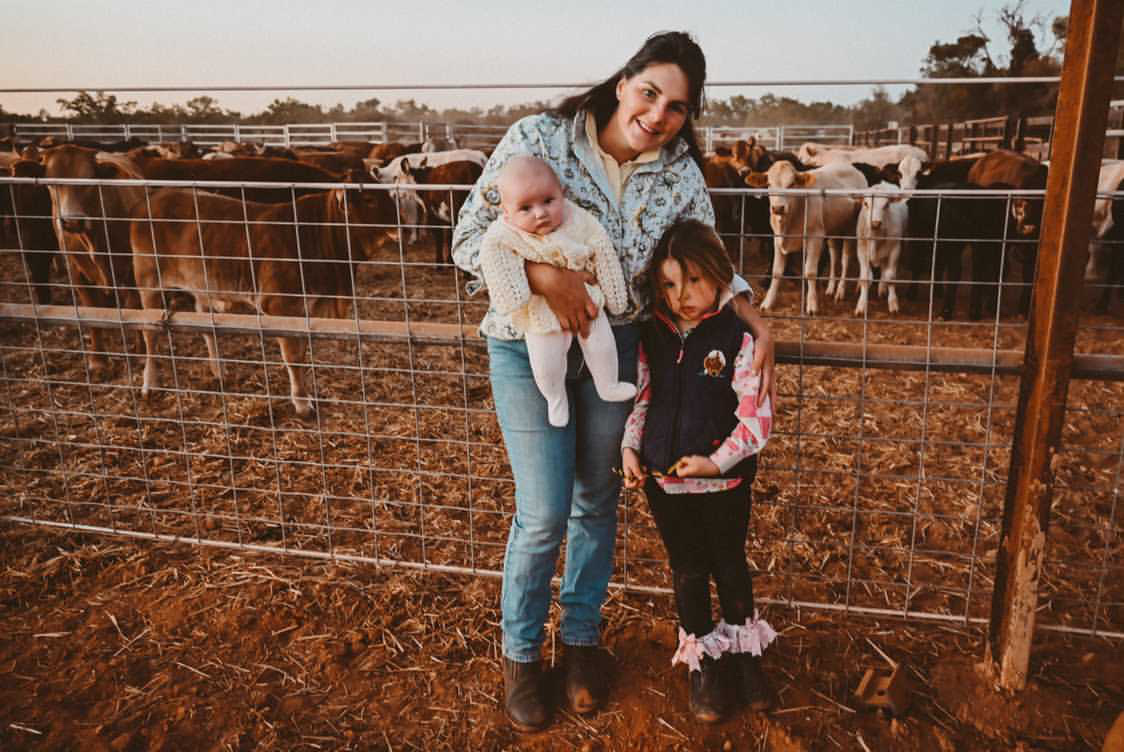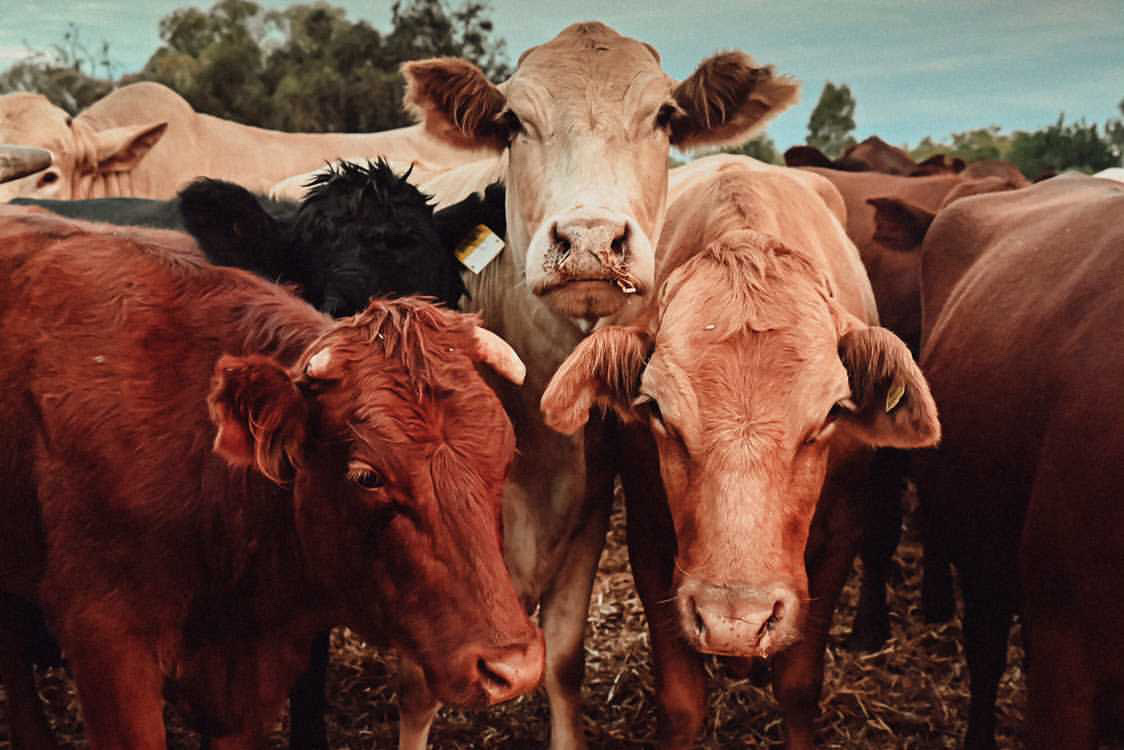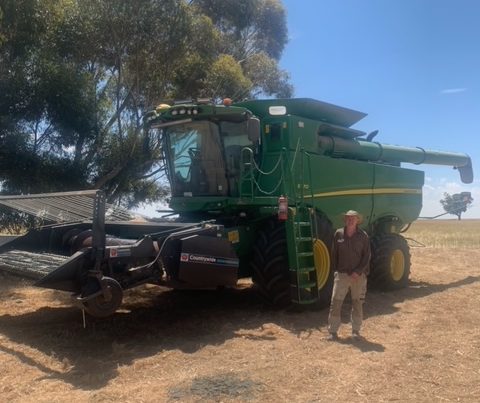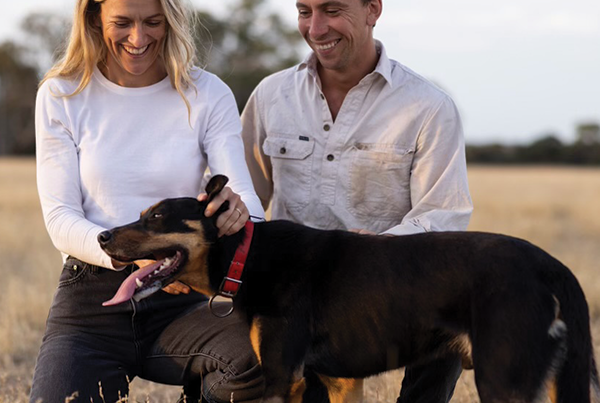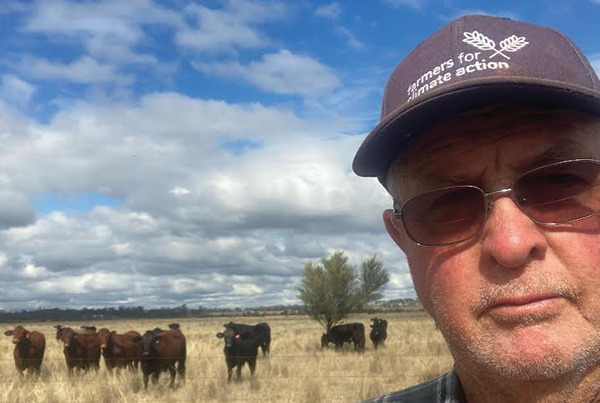At a glance
Who: Jake & Francesca Fennell, and Francesca’s Mum Janet who resides in the UK
What: Wintinna Station, 3812km2, self-replacing beef herd predominantly Charbray and Angus X
Where: Far north of South Australia
Can you tell us about your property?
The opportunity arose to go into partnership with Francesca’s mum Janet and Wintinna was purchased in 2015.
Wintinna is in the Far North of SA with an average rainfall of 208mm, although we would be very happy if we got our average! The Stuart Highway runs through the middle of the property and roughly splits Wintinna into two land types; West of the highway is mainly sandy country with mulga trees and grasses such as buckwandery, broadleaf wandery, woolybutt and kerosene grass. To the East is open tablelands with gibber plains, mitchell grass and lots of shallow watercourses. For us it’s an ideal mix for breeding and backgrounding.
We are a husband and wife team (including 3 little helpers) and employ two full-time station hands, engaging contractors or family members when we need to eg mustering. Wintinna was quite undeveloped when we moved in which has allowed us to begin setting it up with the view of running it with minimum staff.
What first got you thinking about climate change?
The whole world is talking about climate change, as much as we don’t want it to be true, all the scientists in the world can’t be wrong. Now we have that mindset we are working towards improving our operation to make sure what we are doing is sustainable for future generations.
We found it frustrating that its constantly on the news but coming from people who aren’t involved in our industry eg politicians or activists. We are living and working on the land, dealing with mother nature on a daily basis, we all want to look after our investment and looking after the land is a natural thing for us to do. Now we know better methods, we can start doing better.
In the 6 years we have been here, we have recorded the 3 lowest rainfalls since 1955. The summer of 2018/2019 was the worst recorded in history, we received only 15mm of rain, that was an eye opener and does make you think and ask questions…”what if this is what the future looks like?”. Around this time we listened to a podcast of Alan Savory, what he said made a lot of sense to us and we started moving away from traditional set-stocking to doing a grazing rotation to help assist with soil and grass management.
Has climate change impacted on your farm business?
Climate variability during the past few years of drought affected us economically, we had to sell cattle a lot lighter and earlier than what we wanted to and also for a price that was below cost of production.
It hasn’t affected us yet but I think social license will in the future, We’ve seen it first hand with our nieces and nephews, a lot of young people believe that red meat is this huge emitter of green house gas and they should be switching their diets to vegan or eating less meat, when rather they should ensure they are eating regenerative meat.
What are some of the climate-smart strategies you’ve been employing and how successful have they been?
We have trialled a grazing rotation in a few of our paddocks. The results have been amazing with more variety of grasses and ground-cover and on less rainfall. We are working towards putting the whole system into the rotation, however, it’s expensive to do because of low stocking density and general size of the property in regards to infrastructure but we think overtime it will pay for itself in terms of economic value but also our land will be more productive and resilient to a variable climate.
We did have a couple of failures letting the cattle graze down too much and for too long but we had a specialist here through the Building Pastoral Sustainability Program who told us for our native perennials we should only be grazing to a maximum of 40% taken to reduce root drop off. We’re trying to manage now for good soil health rather than soley grass volume.
We use water telemetry with the company Farmbot, we have only 13 installed at the moment with plans to put one on every tank and each one has a rain gauge. The rain gauge provides us with perspective on grass growth per mm of rainfall, whereas before the whole property would go off the house rainfall which was not an accurate representation. The Farmbots have reduced our fuel consumption, vehicle usage, wear and tear and reduced labour.
We’ve moved all the bores onto renewable energy; solar or wind, this has been a major reduction in running costs. For example one bore was started every second day in summer on a 80km’s round trip, this is now on solar and we go out once a week. We have peace of mind that’s it’s pumping everyday the sun is shining, we can watch water consumption via the Farmbot which gives an indication if anything is wrong and we need to go out.
We pregnancy-test females to ensure that we are only keeping productive animals, its one of the most important management tools we use.
We have started installing grader banks to pool water and slow it down to re-hydrate the land. Again this is expensive to do and we have a lot of work to do before we start seeing results but its only the beginning.
Do you use renewable energy on your farm? What are the benefits?
We have a 5kw solar system that runs about 50% of the power, we would like to upgrade within the next few years to have zero generator time.
If you could send a message about climate change to the Federal Government (in 50 words or less) what would it be?
Provide financial incentives for producers doing the right thing, this will encourage others to ensure they are sustainable and make a change.
Stop allowing large corporations to peddle the message that red-meat is bad for the environment and start promoting and teaching grazing beef as part of the solution to climate change.
